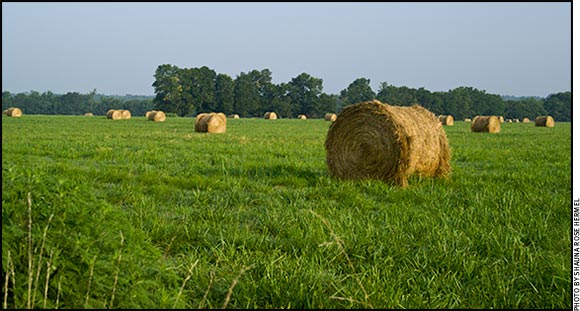
Delayed Hay Harvest Calls for Testing
Tips offered for collecting accurate hay test samples.
This year’s delayed hay harvest calls for hay testing.
University of Missouri (MU) Extension agronomy specialist Anthony Ohmes says farmers benefit from routine hay testing.
Hay quality varies based on forage species, maturity, management, harvest conditions, and insect or disease damage. Guessing the quality of hay fed to livestock could result in lower profits, Ohmes says. Knowing the hay’s nutrient value can help livestock owners decide if animals need supplements.
Ohmes suggests that farmers sample each lot separately. A hay lot comes from the same field and forage makeup and is grown and harvested under the same environmental conditions. “Every field and cutting will be different,” Ohmes says.
Use a 12- to 24-inch hay probe, he says. It should be ⅜- to ⅝-inch in diameter. Do not grab or hand-pull samples. Samples collected that way do not provide uniform results and could lead to misleading values.
Sample multiple bales out of a hay lot. The lot should represent at least 10%, or at least 15 random bales.
The sampling method varies for each bale type. On large round bales, take samples on the curved side of the bale and remove the outer layer if moldy. Avoid sampling from the outside of the bale. On large square bales, take samples at a 45° angle on the side of the bale or 90° angle on the end of the bale. Sample small square bales through the center and end.
Keep each lot separate, Ohmes says. Mix samples in a bucket and fill a quart plastic bag. Samples perish quickly, so send them to the lab on the same day as the sampling. If this is not possible, keep samples away from direct sunlight and store in a cool, dry place until sending. Freeze high-moisture samples (above 15%) such as baleage or silage if they cannot be sent right away.
Mark the sample by date, cutting, location and owner before shipping.
Some MU Extension centers lend probes at no cost. Find information on hay sampling at crops.missouri.edu/forage.
Hay tests cost about $20 each at certified labs throughout the state. You can find information on how to read results at extension.missouri.edu/aginfocus/forage-testing.aspx.

Editor’s Note: Linda Geist is a writer for University of Missouri Extension.






